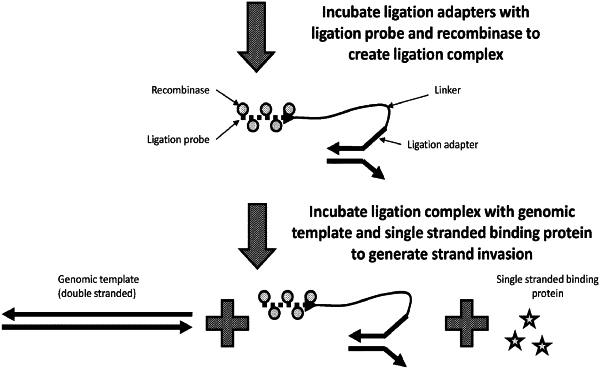| CPC C12Q 1/6827 (2013.01) [C12Q 1/68 (2013.01); C12Q 1/686 (2013.01); C12Q 1/6806 (2013.01); C12Q 1/6855 (2013.01); C12Q 1/6869 (2013.01); C12Q 2521/501 (2013.01); C12Q 2525/161 (2013.01); C12Q 2525/191 (2013.01); C12Q 2531/113 (2013.01); C12Q 2535/122 (2013.01)] | 11 Claims |

|
1. A method for of selectively ligating adapters to a target nucleic acid, the method comprising:
providing one or more 5′ linked ligation adapters each comprising (1) an adapter not complementary to the target nucleic acid and (2) a single-stranded probe complementary to a portion of the target nucleic acid,
providing one or more 3′ linked ligation adapters each comprising (1) an adapter not complementary to the target nucleic acid and (2) a single-stranded probe complementary to a portion of the target nucleic acid,
combining a sample comprising different nucleic acid sequences with the one or more 5′ linked ligation adapters and the one or more 3′ linked ligation adapters under conditions in which the one or more 5′ linked ligation adapters and the one or more 3′ linked ligation adapters hybridize specifically to at least a first fragment in the heterogeneous mixture, wherein the first fragment comprises the target nucleic acid,
ligating one of the 5′ linked ligation adapters to the 5′ terminus of the first fragment and
ligating one of the 3′ linked ligation adapters to the 3′ terminus of the first fragment, thereby producing a ligation product comprising the target nucleic acid.
|